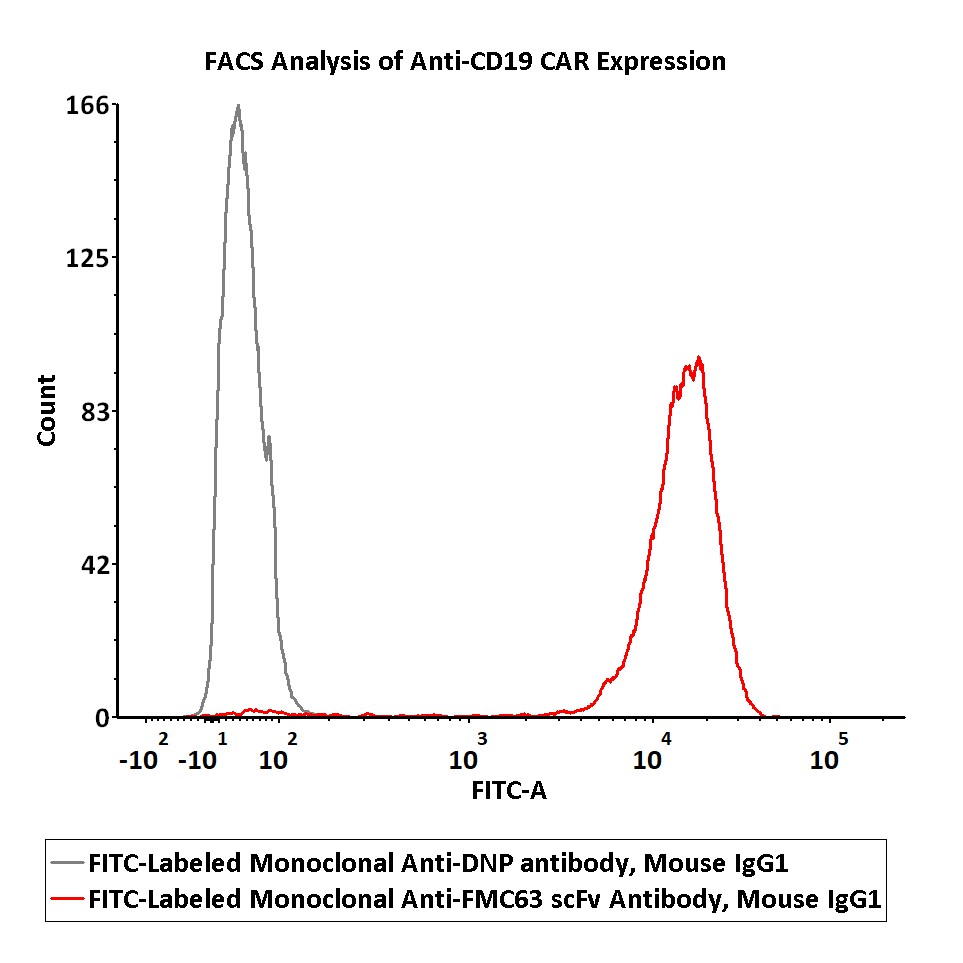抗体来源(Source)
Mouse IgG1 kappa Antibody Isotype Control is a monoclonal antibody recombinantly expressed from human 293 cells (HEK293), which provides higher batch consistency and long term security of supply.
应用(Application)
Flow Cytometry.
种属(Species)
Mouse
亚型(Isotype)
Mouse IgG1/kappa
特异性(Specificity)
Specifically reacts with DNP (Dinitrophenyl) and DNP conjugated proteins, which is normally not present in Humans or animals. Therefore, DNP-FM1A1 does not react with any antigen of Human or animal cells.
免疫原(Immunogen)
DNP (Dinitrophenyl).
偶联(Conjugate)
FITC
Excitation source: 488 nm spectral line, argon-ion laser
Excitation Wavelength: 488 nm
Emission Wavelength: 535 nm
推荐稀释比(Recommended Dilution)
1:50
制剂(Formulation)
Lyophilized from 0.22 μm filtered solution in PBS, 0.5% BSA, pH7.4 with trehalose as protectant.
Contact us for customized product form or formulation.
重构方法(Reconstitution)
Please see Certificate of Analysis for specific instructions.
For best performance, we strongly recommend you to follow the reconstitution protocol provided in the CoA.
存储(Storage)
For long term storage, the product should be stored at lyophilized state at -20°C or lower.
Please protect from light and avoid repeated freeze-thaw cycles.
This product is stable after storage at:
- -20°C to -70°C for 24 months in lyophilized state;
- -70°C for 12 months under sterile conditions after reconstitution.
活性(Bioactivity)-FACS

2e5 of Anti-CD19 CAR-293 cells were stained with 100 μL of 1:50 dilution (2 μL stock solution in 100 μL FACS buffer) of FITC-Labeled Mouse IgG1 Antibody Isotype Control (Cat. No. DNP-FM1A1) and positive control FITC-Labeled Monoclonal Anti-FMC63 scFv Antibody, Mouse IgG1 (Cat. No. FM3-FY45P1) respectively, and FITC signal was used to evaluate the binding activity (QC tested).
Protocol

5e5 of PBMCs were stained with 100 μL of 1:50 dilution (2 μL stock solution in 100 μL FACS buffer) of FITC-Labeled Mouse IgG1 Antibody Isotype Control (Cat. No. DNP-FM1A1), and FITC signal was used to evaluate the binding activity (QC tested).
Protocol
背景(Background)
A hapten is a small molecule that can elicit an immune response only when conjugated with a large carrier such as a protein. Typical haptens include drugs, urushiol, quinone, steroids, etc. Peptides and non-protein antigens usually need conjugating to a carrier protein (such as BSA (bovine serum albumin) or KLH (keyhole limpet hemocyanin) to become good immunogens). Additionally, haptens should be administered with an adjuvant to ensure a high quality immune response. It is important that the hapten design (preserving greatly the chemical structure and spatial conformation of target compound), selection of the appropriate carrier protein and the conjugation method are key conditions for the desired specificity anti-hapten antibodies. We design anti-hapten antibodies based on the HaptenDB information.























































 膜杰作
膜杰作 Star Staining
Star Staining











